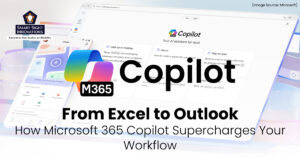 Accounting, inventory and financial operations are the most sensitive aspects of large as well as medium scale businesses. Tally remains the default software for accounting, inventory and ease of statutory compliance, and enterprises prefer to use it in these segments. The need for software to properly integrate the default accounting and statutory compliances as per the law of the land is very high and in the following paragraphs, you will find a few salient features of the integration capabilities of Tally ERP 9.
Accounting, inventory and financial operations are the most sensitive aspects of large as well as medium scale businesses. Tally remains the default software for accounting, inventory and ease of statutory compliance, and enterprises prefer to use it in these segments. The need for software to properly integrate the default accounting and statutory compliances as per the law of the land is very high and in the following paragraphs, you will find a few salient features of the integration capabilities of Tally ERP 9.
Need And Benefits of Integration:
Integration of information is becoming very important particularly with the advances in automation technology. It is important to simplify processes & information systems for seamless communication to provide a real time visibility across business operations and flexible enough to fit in with the changing structure of the business.
Non-aligned processes and systems can be time-consuming for businesses to manage, whereas a properly aligned information system can reduce disruptions caused due to different data sources. An integrated system helps an organization to reduce costs and increase efficiency by streamlining the processes.
Tally ERP 9 – Integration Capabilities:
Tally ERP 9 is an organisational level accounting software that mainly stores the transactional data and generates pre-defined reports after critical analysis of the data. Effective integration of Tally ERP 9 with other softwares like a Business Intelligence tool can provide users with several features that may not be possible to get from Tally ERP 9 alone.
With a Business Intelligence tool integrated with Tally ERP 9, it is possible to achieve predictive analysis by using the historical transactional data from Tally. There are APIs in Tally ERP 9 that can integrate with any external tool, and it has several options to integrate with other external platforms.
Tally Interfaces Used For Integration:
For integration purposes, Tally uses three APIs to communicate with the external world which facilitate excellent integration:
- XML or extensible Markup language
- ODBC or Open Database Connectivity
- DLL or Dynamic Link Library that supports the TDL (Tally Definition Language)
All these APIs can offer seamless integration between databases and applications both online and offline. Below are a few details of the applications to help you decide upon the one that suits your business.
Tally XML Interface:
The standard for information exchange with external systems is Extensible Markup Language or XML. Tally ERP 9 supports integration with web scripting languages like the PHP / Perl / ASP and other languages like VB or with any other environment that is capable of supporting XML and HTTP. The import and export capability of XML in Tally ERP 9 makes this integration possible.
Tally ERP 9 delivers almost all functionalities of Web Services provided by the .NET framework of Microsoft. Through the use of internet standards like HTTP and XML, all Tally ERP can be accessible to any number of potentially disparate systems.
Tally can act as a server as well as a client while connecting to external applications. It can act as an HTTP server that is capable of receiving an XML request and can respond with an XML response. The requesting application can get the entire Tally data and it is also possible to store data in the Tally Database.
Tally can also act as a client and it has the capability of interacting with a WEB Service delivering data over HTTP using the same interface. As a client it retrieves as well as stores data into an external database. The Web Service that is capable of handling the Response & Request of Tally serves as a layer between the External Database and Tally.
Tally ODBC Interface:
Open Database Connectivity or ODBC is an API (Application Program Interface) specification that allows applications to access multiple databases using SQL (Structured Query Language). It provides maximum interoperability without targeting a specific type of data source and allows an ODBC developer to develop an application.
An ODBC implementation has an ODBC Client, ODBC Driver, and an ODBC server. The ODBC client implements the ODBC API which will communicate with the ODBC Driver provided by the database. The ODBC driver is a library that implements the functions supported by the ODBC API, processes the ODBC function calls and submits SQL requests to the database and also returns the results to the application.
Tally ERP 9 is an ODBC enabled application and acts as an ODBC server as well. It can talk to the ODBC Driver of external database and here the collection definition can gather data from external sources through ODBC. The collection definition can easily communicate with the ODBC Drivers through DSN or DSN-less, by mentioning the ODBC Driver ID, the path of the source, etc.
Once all the required data is available to the Tally ERP 9 application, it will treat each row as one object and each column as the method of that object. It will then be possible to utilize the data inside the application easily. External applications can retrieve data from Tally easily by using the interface.
DLL or Dynamic Link Library:
Based on Microsoft’s shared library concept, DLL or Dynamic Link Library allows other programs to get access to several instructions. This file has many functions comparable with the library function of many programming languages like C and C++. In Tally ERP 9, you can access the external functions by uploading the DLLs.
Tally has only generalized features to keep the functionality simple for all. However, for clients, for whom basic Tally may not fulfill the need, the functionality of Tally can be extended by writing the programs in TDLs.
You can generate the DLLs by using VB, VC++, .NET framework etc, and can invoke it from TDL, which makes it possible to invoke the functions of DLL and perform necessary operations. Dynamic linking can provide a way to call a function not part of the executable code of a process.
Benefits of Integration:
The biggest benefit of Tally ERP 9 integration is that you can generate reports in several other formats easily and use data residing in Tally. You can make deeply informative reports by utilizing this feature using a BI tool, using which an organization can carry out the task of analyzing and data mining easily, making the decision-making process immensely accurate.
It can also help generate MIS, inventory and stock reports in no time and help the accounting team generate easy to understand reports quickly that support in the growth of your organization. If you are looking for experts to integrate Tally ERP 9 with other software you can consider talking to a specialist at Smart Sight Innovations.














